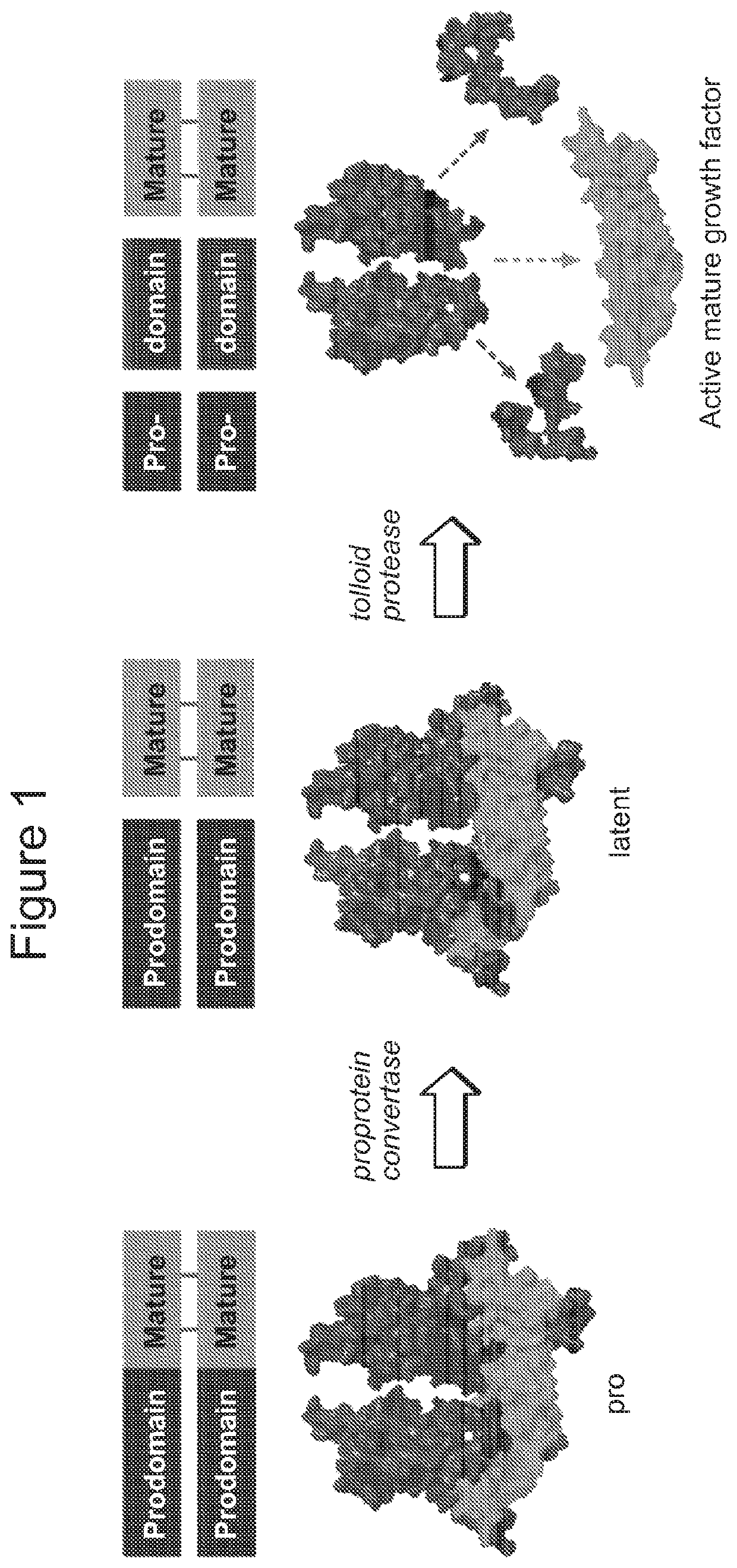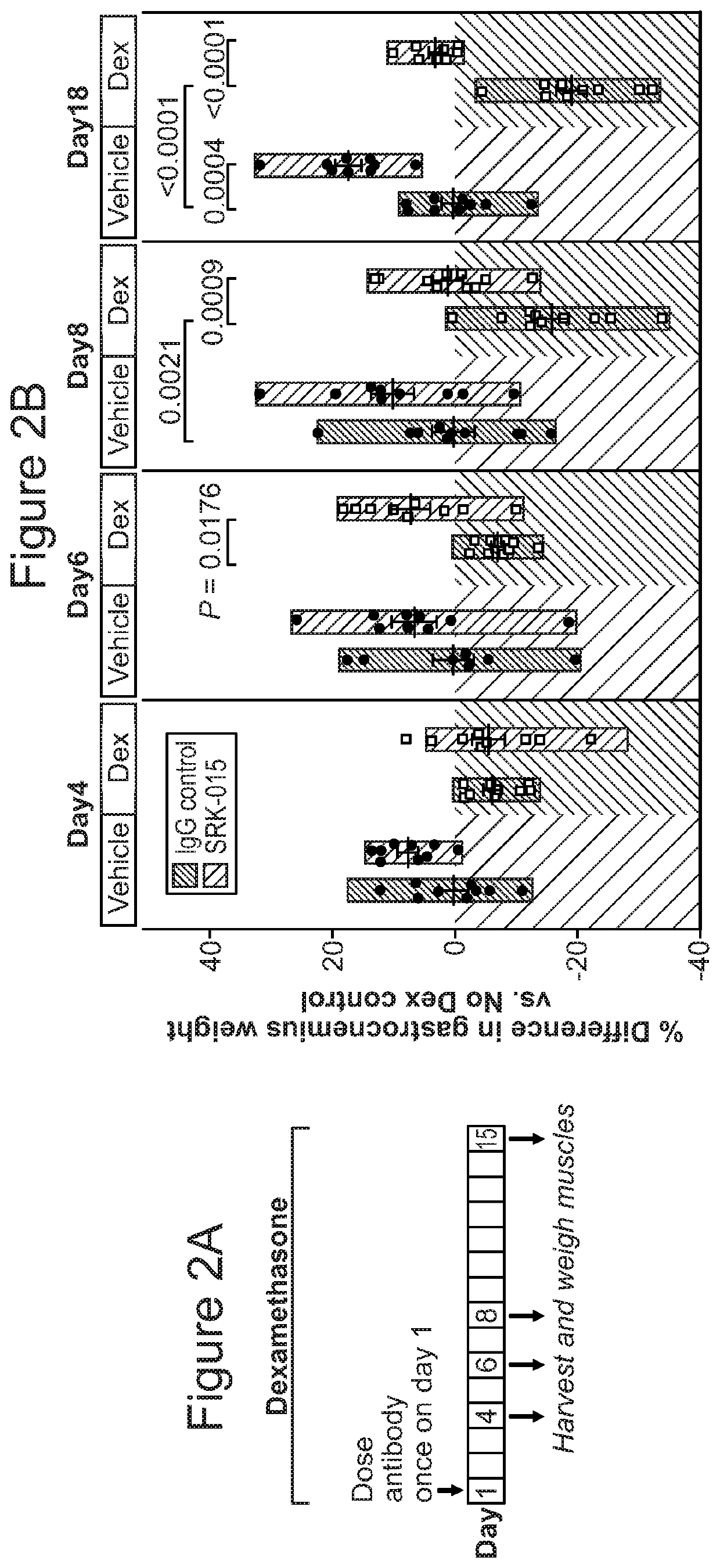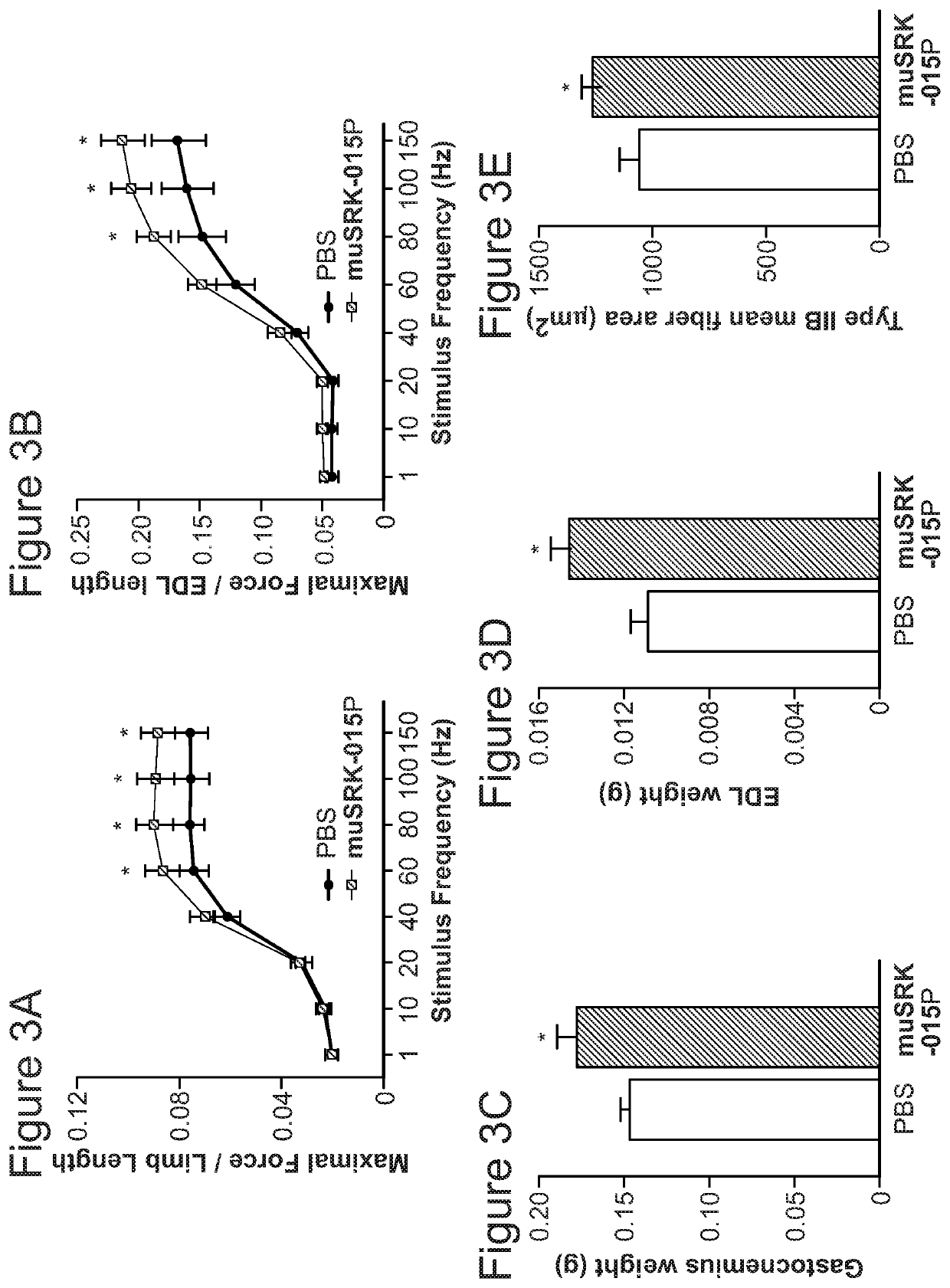Use of myostatin inhibitors and combination therapies
a technology which is applied in the field of use of myostatin inhibitors and combination therapies, can solve the problems of insufficient safety and effectiveness of drugs, drug candidates for myostatin inhibitors, small molecules and biologics, and inability to achieve satisfactory preclinical results, so as to maximize or improve the benefits of myostatin inhibition
- Summary
- Abstract
- Description
- Claims
- Application Information
AI Technical Summary
Benefits of technology
Problems solved by technology
Method used
Image
Examples
example 1
Specific Inhibition of Myostatin Activation
[0280]Like other TGFβ family members, myostatin is secreted as an inactive precursor, termed proMyostatin, in which presence of the prodomain occludes growth factor access to its receptor. Myostatin activation results from two distinct proteolytic cleavage steps (FIG. 1). ProMyostatin is first cleaved by a proprotein convertase, such as furin, that recognizes an RXXR site between the prodomain and the mature growth factor (30, 62). Following cleavage, the growth factor and prodomain remain associated, forming a latent complex (latent myostatin) which is unable to bind to its receptor. Active growth factor is released following a second cleavage by a member of the BMP / tolloid family (such as TLL-2; tolloid-like protein 2) (63). Following activation, myostatin binds to a receptor complex consisting of a type I receptor (Alk4 / 5) and a type II receptor (ActRIIA / B), resulting in phosphorylation and activation of Smad2 / 3. Activation of this signa...
example 2
ocalization of Myostatin Pro Forms
[0283]As SRK-015 binds pro- and latent myostatin, the localization of these pro-forms in mouse skeletal muscle was investigated to ensure that these forms of myostatin are present in the extracellular space of muscle where they can be bound and inhibited by the SRK-015 antibody. Cryosections of tibialis anterior muscles from healthy mice were immunostained with antibody GDF8_068, which binds pro- and latent Myostatin, but not the mature growth factor. Tissues were also immunostained with antibodies against laminin, a component of muscle extracellular matrix. Results showed that the majority of myostatin precursors detected in muscle are in the extracellular space with little signal detected intracellularly. Significant co-staining occurred in interstitial extracellular spaces and around interstitial nuclei. To ensure the specificity of antibody staining, samples were immunostained with GDF8-068 which had been pre-incubated with a 100-fold molar exce...
example 3
revents Dexamethasone-Induced Muscle Atrophy
[0284]SRK-015 increased muscle mass in healthy animals and reduced muscle loss in a dexamethasone-induced model of atrophy. As shown in FIG. 2, administration of single 20 mg / kg dose of SRK-015 to healthy male mice (vehicle group) resulted in a significant increase in muscle mass (17.5% versus IgG control) after 15 days Similar increases in muscle mass were also observed in female mice (data not shown). SRK-015 was also effective in preventing muscle loss upon dexamethasone treatment. Chronic administration of dexamethasone resulted in a significant loss of muscle mass by day 8 (16% decrease, IgG vehicle versus IgG Dex). A single 20 mg / kg administration of SRK-015 to dexamethasone treated mice prevented muscle atrophy throughout the course of the study, with no significant difference observed between treated and IgG vehicle control groups (FIG. 2).
PUM
| Property | Measurement | Unit |
|---|---|---|
| time | aaaaa | aaaaa |
| frequencies | aaaaa | aaaaa |
| time | aaaaa | aaaaa |
Abstract
Description
Claims
Application Information
 Login to View More
Login to View More - R&D
- Intellectual Property
- Life Sciences
- Materials
- Tech Scout
- Unparalleled Data Quality
- Higher Quality Content
- 60% Fewer Hallucinations
Browse by: Latest US Patents, China's latest patents, Technical Efficacy Thesaurus, Application Domain, Technology Topic, Popular Technical Reports.
© 2025 PatSnap. All rights reserved.Legal|Privacy policy|Modern Slavery Act Transparency Statement|Sitemap|About US| Contact US: help@patsnap.com



